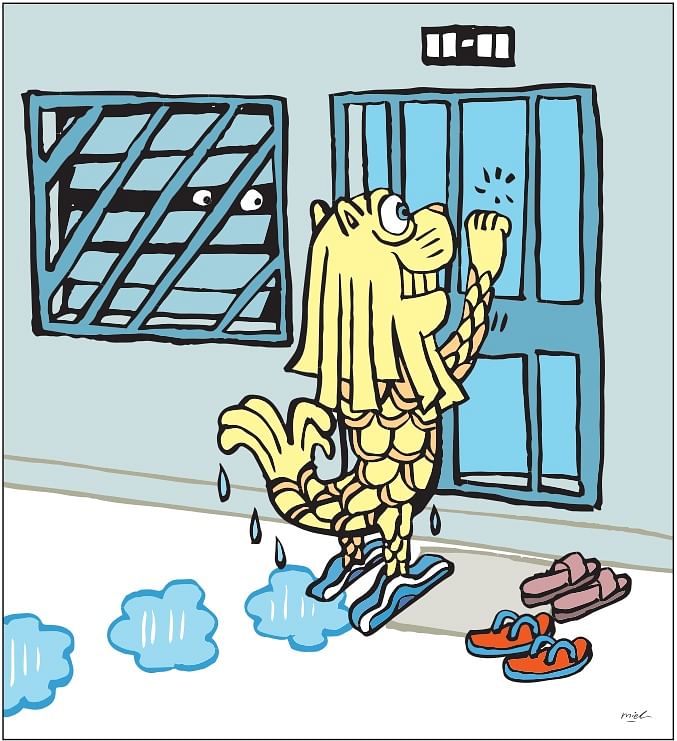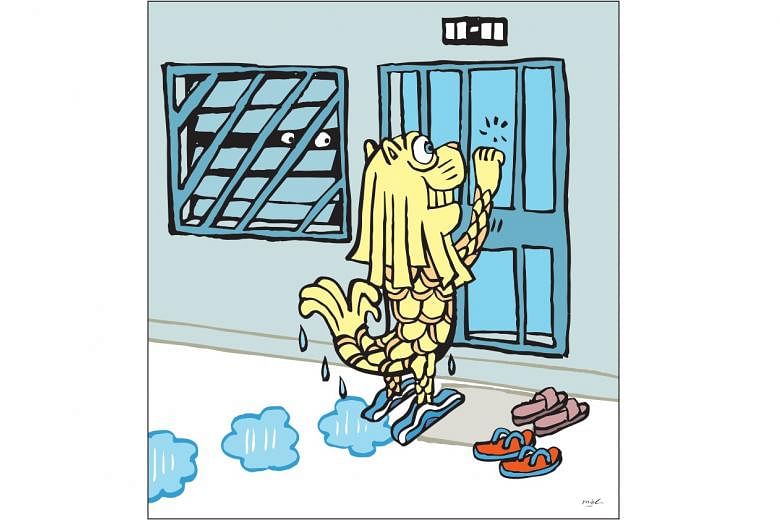After four years of propelling the Republic's tourism sector to record heights, the Singapore Tourism Board (STB) now faces the daunting challenge of courting its toughest audience yet: Singaporeans.
Domestic tourism may seem an odd concept in a city state that can be traversed end to end in under two hours. But with the resumption of leisure overseas travel far on the horizon, it is a key part of the Government's strategy to stave off mass closures and layoffs in the tourism sector, which employed about 65,000 workers last year.
Across the globe, nations including Thailand and Japan are encouraging residents to take domestic vacations and travel to other parts of the country, as border closures take a heavy toll on tourism-reliant businesses.
In the Singapore context, domestic tourism simply refers to going out and spending money on leisure activities, whether it be a trip to the zoo, a family staycation at a hotel, or even dining out and visits to the museums.
To encourage this, the Government is doling out $320 million in tourism vouchers to Singaporeans. This is on top of a $45 million marketing campaign that aims to convince residents that there is more to discover in their backyard.
The considerable effort to save the tourism sector from collapse reflects a greater importance than the 4 per cent it contributes to Singapore's gross domestic product.
After all, the sector not only boosts Singapore's attractiveness for foreign investment and leisure travel, but also provides leisure activities for residents and supports related industries like retail and food and beverage (F&B).
To drive home the point that tourism props up many activities and businesses that residents enjoy, STB's chief executive Keith Tan warned Singaporeans last month that their favourite shops, eateries and attractions may soon disappear without their support.
Many have heeded the call, with healthy crowds returning to malls, restaurants and outdoor venues in recent weeks, even prompting warnings against overcrowding.
While the Government and industry players have noted that the domestic market will not be enough to make up for the tourist shortfall, there is potential to offset a significant portion of their spending, based on the amount residents spend on travel.
Last year, some 19 million visitors spent $27.7 billion here. That sounds like a huge sum, but consider that it is less than what Singapore's resident population spent on overseas travel last year: $36.5 billion, or US$26.6 billion, according to the World Tourism Organisation.
As they can't travel overseas during the pandemic with borders closed, can Singaporeans be convinced to spend a portion of their holiday budget at home?
That is the hope for many marketers, even though purse strings are tighter during the current recession. It requires tourism-reliant businesses to home in on the preferences and habits of local customers.
VALUE FOR MONEY
Singapore shoppers like value for money, so this is one sure-fire approach to luring them to spend.
The $45 million SingapoRediscovers campaign kicked off last month with an array of 80 promotions across categories such as dining, attractions and accommodation. Examples include packages at five-star Sentosa hotels that come with dining vouchers and other goodies, starting at upwards of $500 a night.
Singaporeans are a tough bunch to impress. Some expressed disappointment at the offerings, which they said were too pricey and limited to pique their interest.

Businesses lament that it is hard to offer steep discounts and remain viable, particularly given the current restrictions. Most attractions, for example, have a capacity limit of 25 per cent to ensure safe distancing.
The SingapoRediscovers vouchers, announced last week, will help to provide a form of indirect discounting and spur spending.
While details on how and when they will be disbursed have yet to be announced, observers estimate that the amount will most likely work out to about $100 a citizen.
Some suggested that the amount be split evenly among sectors such as F&B and attractions to ensure that all benefit, though they agreed the vouchers would be of little help in the long run to businesses that fail to innovate.
Apart from discounts, improving the offerings is another way to lure local spenders.
Ngee Ann Polytechnic senior tourism lecturer Michael Chiam said businesses may have to think up new products to interest residents, such as back-of-house tours to familiar attractions that provide access and insights to areas that are usually off-limits.
Wax museum Madame Tussauds Singapore is facing a double whammy. Not only have tourists disappeared, but its school and corporate group bookings have also dropped off due to limits on group sizes, said marketing manager Florence Maail.
To help fill the void, the museum created a new product for students called Virtual Images of Singapore. Billed as an interactive learning journey, it lets viewers learn about significant moments in Singapore's history through an online portal.
Next month, visitors to the museum can go behind the scenes to observe a wax artist at work, a new experience developed to attract local residents.
Hotelier and restaurateur Loh Lik Peng, director of the Unlisted Collection group, said dinner crowds have returned to most of its 18 restaurants here, noting that Singaporeans are "all about good deals".
But restaurants in popular tourist areas have remained quiet. Jing Seafood Restaurant, located at One Fullerton, has been offering one-for-one deals that have helped to boost sales.
But price discounting alone is not the way to hook the local market, said Mr Loh. "Delivering value and giving customers what they want is much more important. It also buys you loyalty after the crisis is over."
One way of adding value is through the bundling or cross-promotion of products.
Packaging different activities and accommodation within the same area, for example, would also aid the STB in promoting precincts as mini-holiday destinations.
While the idea of promoting areas like Chinatown and Little India as destinations for residents to rediscover was announced as part of the marketing campaign, it has thus far taken shape only in the form of online precinct guides.
Singapore Retailers Association executive director Rose Tong said cross-promotion can help businesses to grow their base of customers.
"For example, retailers in kids' apparel and accessories could collaborate with tuition centres or enrichment classes and offer a bundle deal and gift vouchers tied to a purchase or class registration," she said.
SPREADING OUT DEMAND
Enticing Singaporeans to step out and spend is only one part of the challenge companies face. Relying solely on the domestic market means tweaking business hours.
Normal business hours may no longer be viable, because residents tend to engage in leisure activities on weekends and holidays, while tourists traditionally even out demand during the week.
With business now heavily concentrated on the weekends, customers may have to be turned away during busy periods. Staying open during off-peak times may also cost more than it brings in.
Already, attractions such as Universal Studios have cut their operations to seven hours, four days a week.
One way to even out demand is to offer targeted deals to different groups, said Dr Chiam. While families with children are most likely to visit attractions during peak hours, others can be incentivised to show up during lull periods, he said.
Dr Kevin Cheong, chairman of the Association of Singapore Attractions, said focusing on evening operations could help to draw after-work crowds.
Encouraging pre-bookings would also better enable businesses to offer timed promotions and plan for operational needs.
While working from home has provided consumers some flexibility, there is a limit to how much demand can be spread out, and operators will have to pare down their hours and costs, said Dr Cheong. "Attractions are likely to scale down to a four- or five-day operating week skewed towards the weekend, and run on a single shift."
TOURISM 2.0
As restrictions on gatherings gradually ease, ticketed events could be a way for venues to draw new visitors.
Escape game events - where small groups embark on puzzle-solving adventures in heritage-rich areas like Haw Par Villa and Chinatown - have proven popular among residents in the past. Last year, Haw Par Villa also teamed up with home-grown party collective Ice Cream Sundays to organise weekend bashes at the park.
But with the pandemic raging on, large-scale physical events are unlikely to resume any time soon. Digital space will be an important proxy. This year's Great Singapore Sale, for example, will go virtual for the first time and feature live streams and games with prizes to be won.
But tourists are still essential to the sector. While efforts to court the local market may help some businesses to stay afloat until tourists return, casualties will mount if borders do not reopen soon, operators said.
Mr Loh of Unlisted Collection said: "The reality of a country like Singapore is that the domestic market is too small to make a sustained dent in the tourism pie."
Dr Cheong said businesses should use this period to study the behaviour of the resident market so that their preferences can be better catered to. Operators should also plan for the future of tourism, where small-group travel and the use of technology are likely to be the norm, he added.
Products must be tailored for business travellers, who will be the first to return through green lane arrangements with other countries.
Dr Chiam said: "This is a golden opportunity for businesses to innovate, test and refine their products with locals and get ready to offer them to tourists when the restrictions are lifted."


